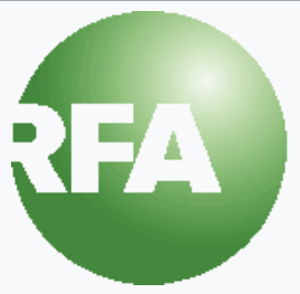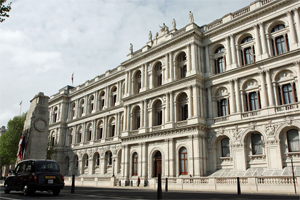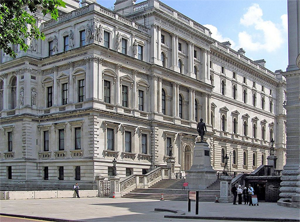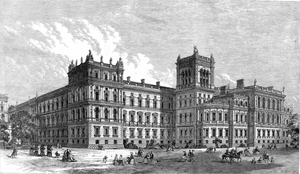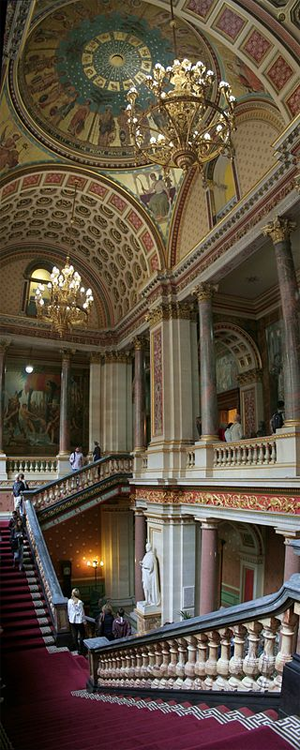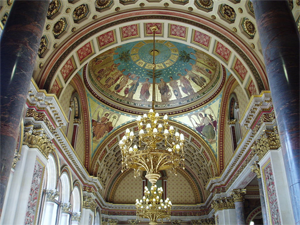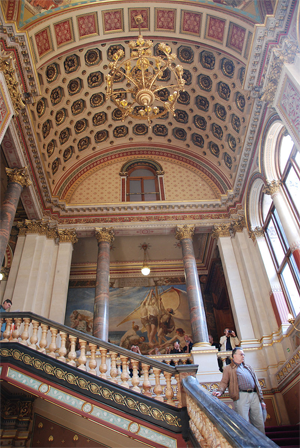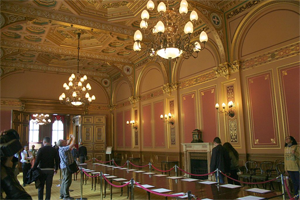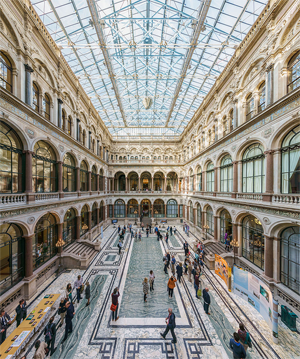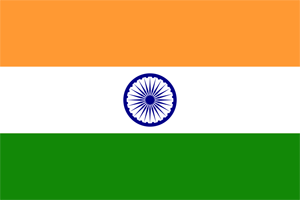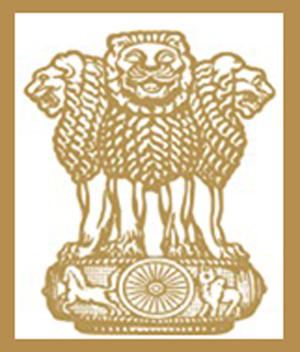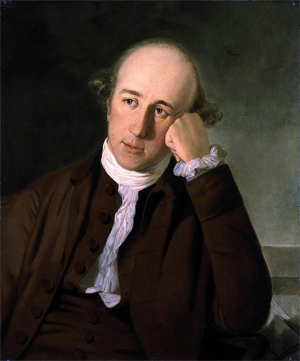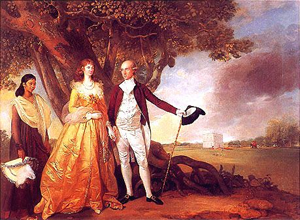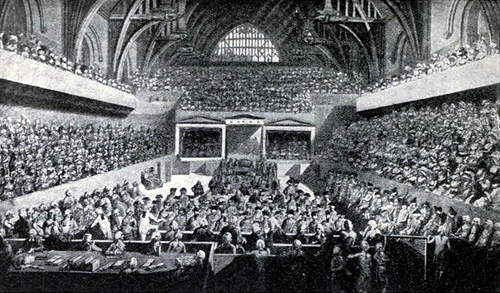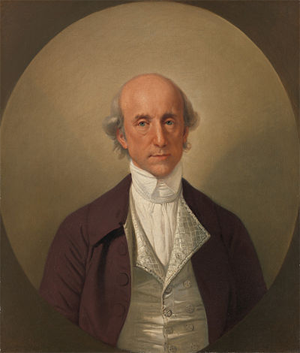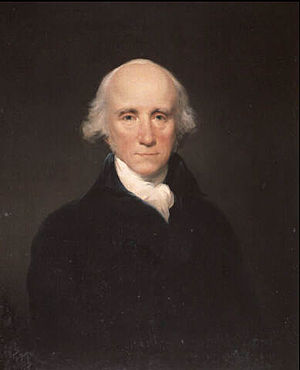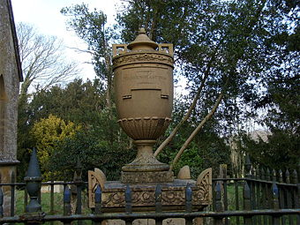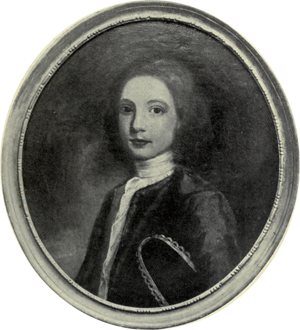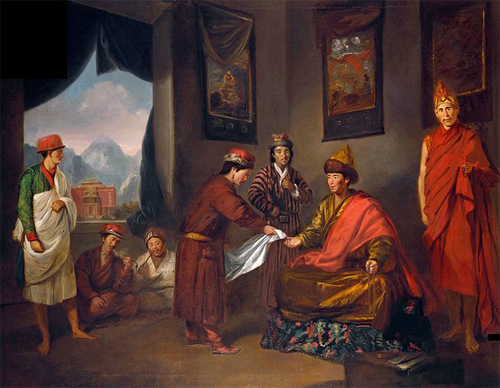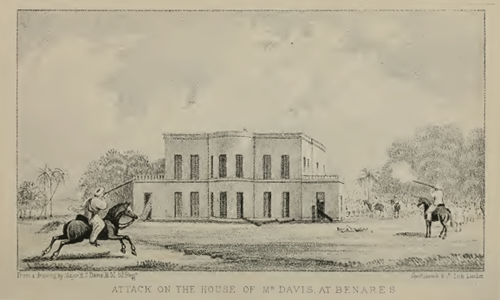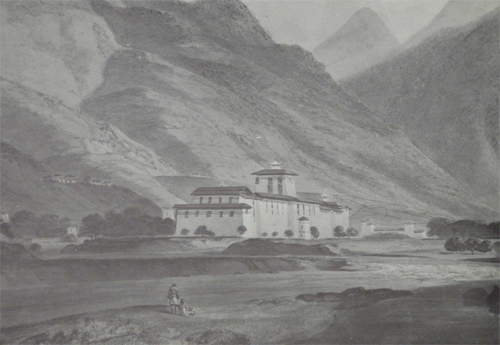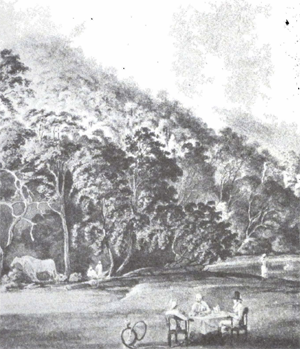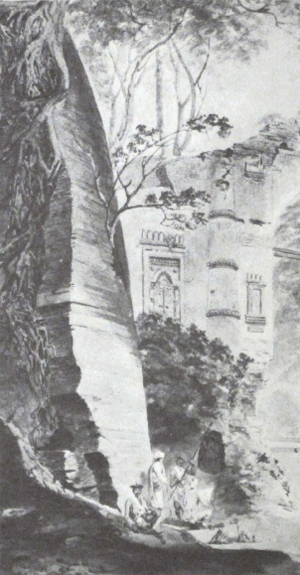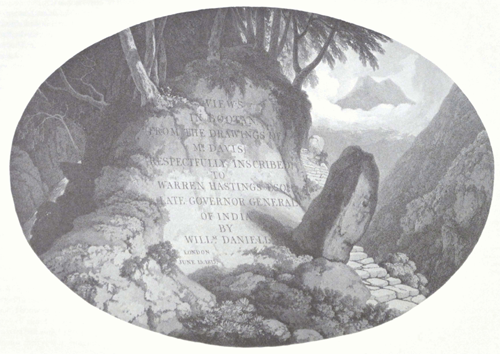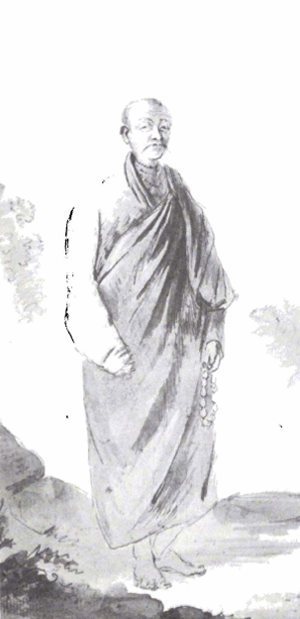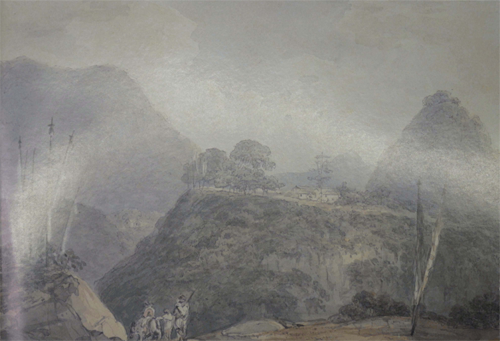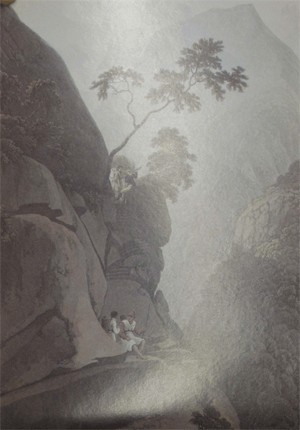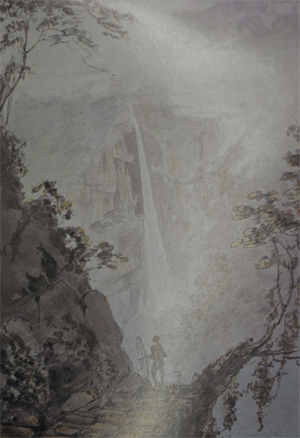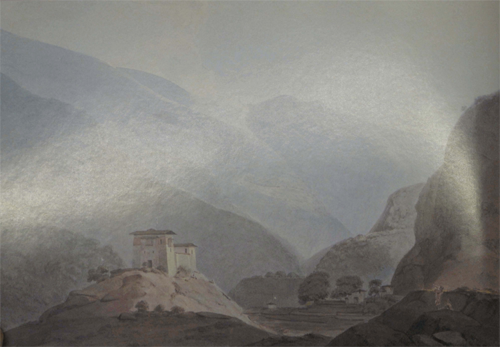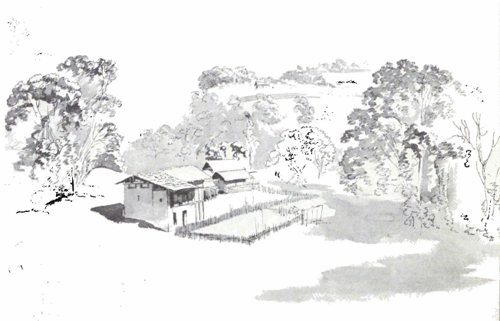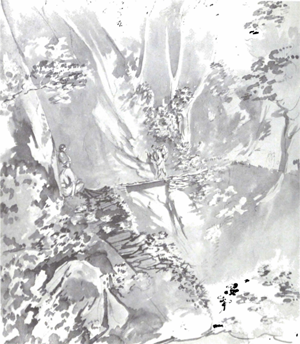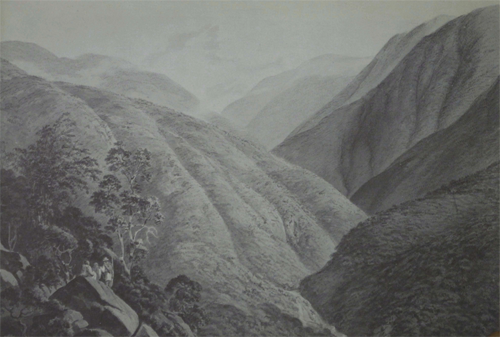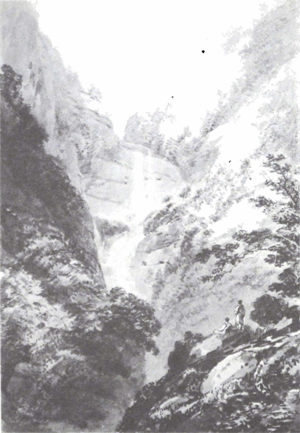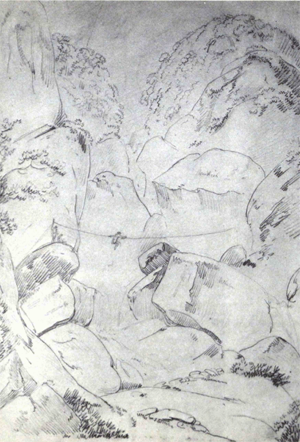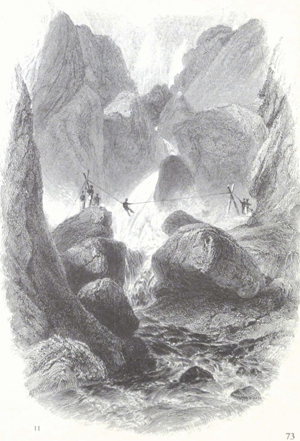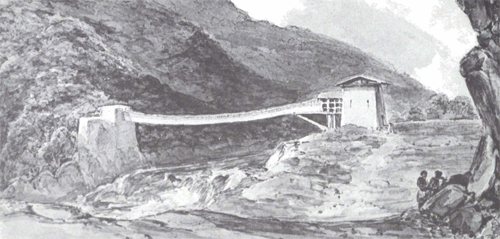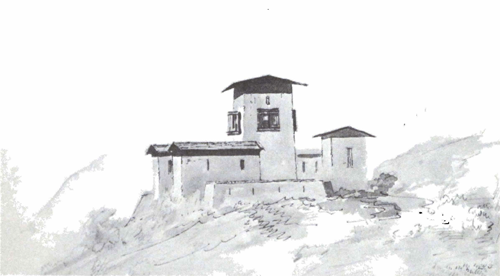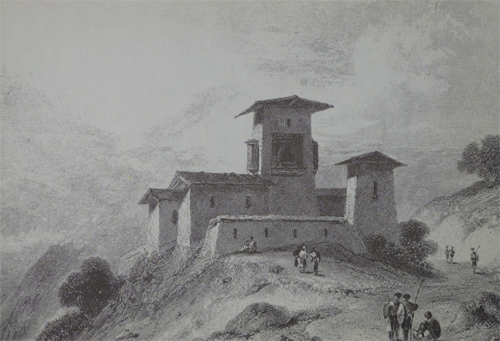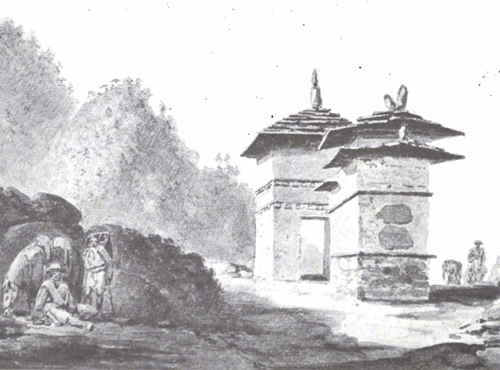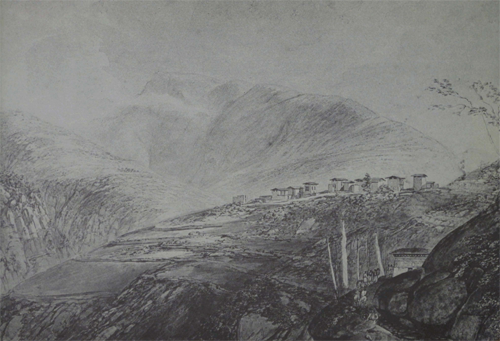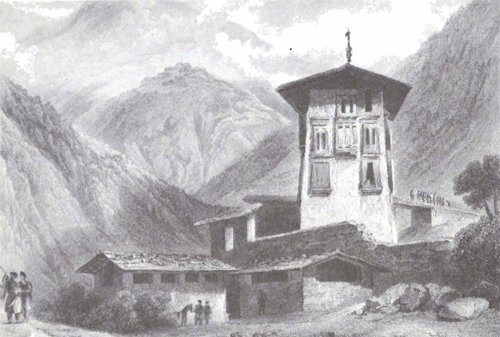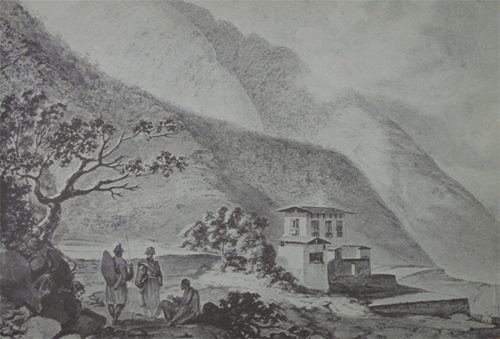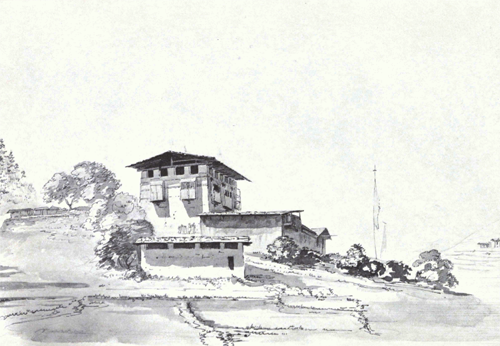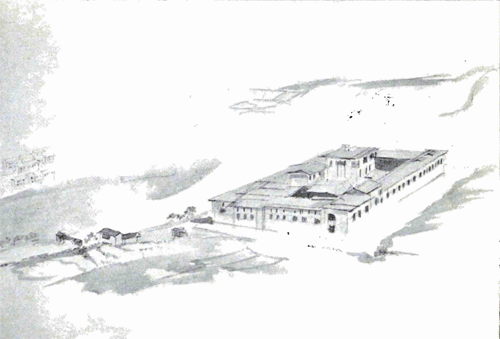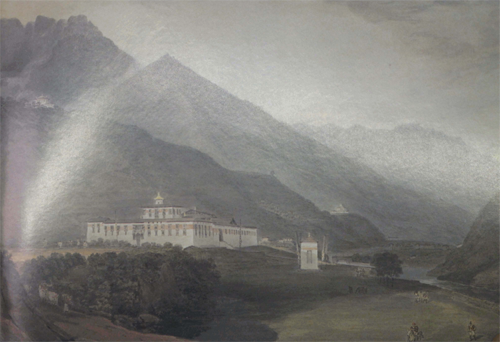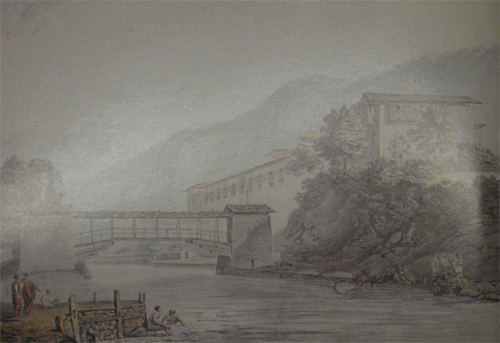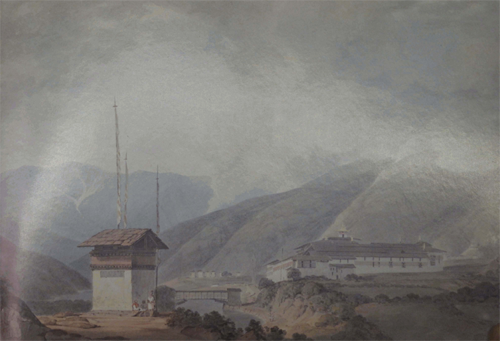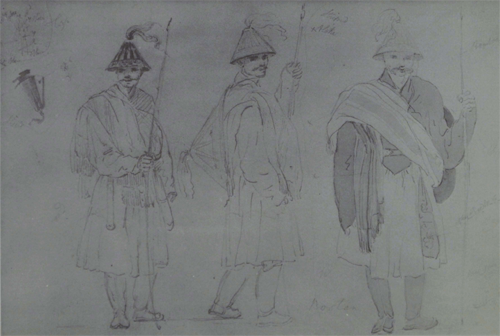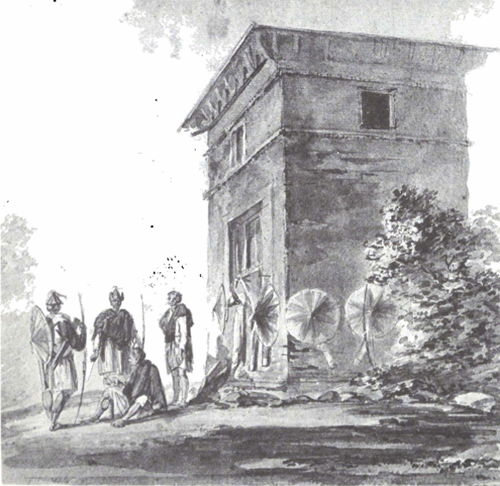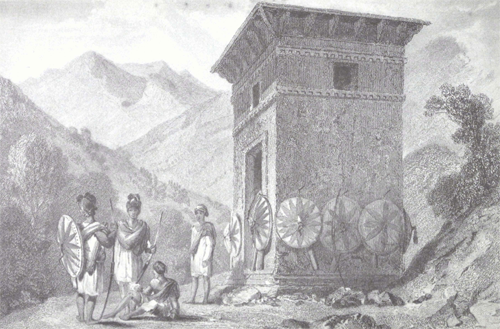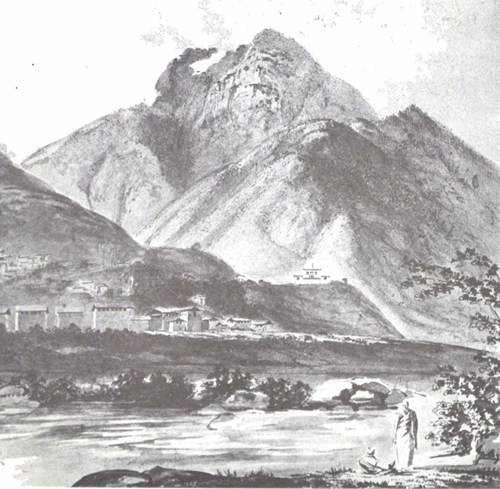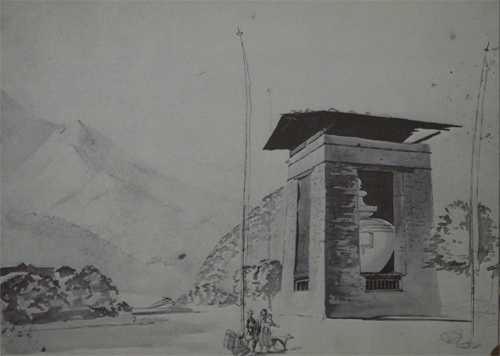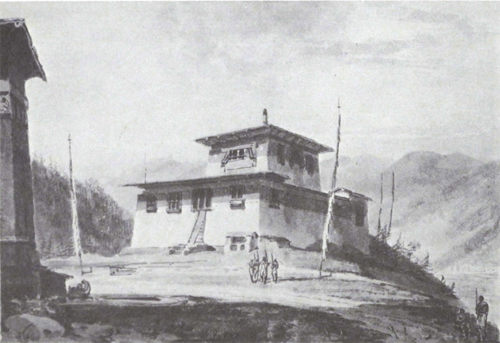by Wikipedia
Accessed: 9/9/19
NOTICE: THIS WORK MAY BE PROTECTED BY COPYRIGHT
YOU ARE REQUIRED TO READ THE COPYRIGHT NOTICE AT THIS LINK BEFORE YOU READ THE FOLLOWING WORK, THAT IS AVAILABLE SOLELY FOR PRIVATE STUDY, SCHOLARSHIP OR RESEARCH PURSUANT TO 17 U.S.C. SECTION 107 AND 108. IN THE EVENT THAT THE LIBRARY DETERMINES THAT UNLAWFUL COPYING OF THIS WORK HAS OCCURRED, THE LIBRARY HAS THE RIGHT TO BLOCK THE I.P. ADDRESS AT WHICH THE UNLAWFUL COPYING APPEARED TO HAVE OCCURRED. THANK YOU FOR RESPECTING THE RIGHTS OF COPYRIGHT OWNERS.

The Asia Foundation
Motto "Strengthen governance, empower woman, expand economic opportunities, increase environmental resilience, promote international cooperation"
Formation 1954
Type Nonprofit organization
Headquarters San Francisco, CA, United States
President and CEO
David D. Arnold
Revenue (2015)
$113,177,863[1]
Expenses (2015) $109,163,737[1]
Website http://www.asiafoundation.org
The Asia Foundation is a nonprofit international development organization committed to "improving lives across a dynamic and developing Asia."[2] Informed by six decades of experience and deep local expertise, its programs address critical issues affecting Asia in the 21st century—governance and law, economic development, women's empowerment, environment, and regional cooperation. Headquartered in San Francisco, The Asia Foundation works through a network of 18 offices in 18 Asian countries and in Washington, DC.
The "Committee For Free Asia" was founded in 1951 as a CIA operation.[3] Its name was changed to "The Asia Foundation" in 1954.[4] The Foundation marked its 60 years of experience in Asia working with private and public partners in the areas of leadership and institutional development, exchanges, and policy research.[5] Starting January 1, 2011, David D. Arnold serves as president of the Foundation.[6] The Foundation is governed by an eminent and well-known group of private sector trustees.
Origins
"The Asia Foundation (TAF), a Central Intelligence Agency proprietary, was established in 1954 to undertake cultural and educational activities on behalf of the United States Government in ways not open to official U.S. agencies."[18]
The Asia Foundation is an outgrowth of the Committee for a Free Asia, which was founded by the U.S. government in 1951.[19] CIA funding and support of the Committee for a Free Asia and the Asia Foundation were assigned the CIA code name "Project DTPILLAR".[20]
In 1954, the Committee for a Free Asia was renamed the Asia Foundation (TAF) and incorporated in California[21] as a private, nominally non-governmental organization devoted to promoting democracy, rule of law, and market-based development in post-war Asia.
Among the original founding officers of the board, there were several presidents/chairmen of large companies including T.S. Peterson, CEO of Standard Oil of California (now Chevron), Brayton Wilbur, president of Wilbur-Ellis Co., and J.D. Zellerbach, chairman of the Crown Zellerbach Corporation; four university presidents including Grayson Kirk from Columbia, J.E. Wallace Sterling of Stanford, and Raymond Allen from UCLA; prominent attorneys including Turner McBaine and A. Crawford Greene; Pulitzer Prize-winning writer James Michener; Paul Hoffman, the first administrator of the Marshall Plan in Europe; and several major figures in foreign affairs.
In 1966, Ramparts revealed that the CIA was covertly funding a number of organizations, including the Asia Foundation.[18] A commission authorized by President Johnson and led by Secretary of State Rusk determined that the Asia Foundation should be preserved and overtly funded by the US government. Following this change, the US government described the Asia Foundation as a "quasi-nongovernmental organizations" and said that "the core of its budget" was still provided by the US government.[22] The Foundation began to restructure its programming, shifting away from its earlier goals of "building democratic institutions and encouraging the development of democratic leadership" toward an emphasis on Asian development as a whole (CRS 1983).
Impact
The Asia Foundation works with local leaders and communities to build effective institutions and advance reforms. Across Asia, the nonprofit organization is improving lives and expanding opportunities by:
• Providing 50 million books to tens of thousands of schools, libraries, and universities.[7]
• Organizing nationwide election monitoring and voter education to ensure free and fair elections and strengthen democracy in virtually every Asian country that has undergone a democratic transition over the past six decades.
• Educating more than a million migrant workers in over one thousand factories in China's Pearl River Delta on their legal rights, safety, and personal health.[8]
• Protecting the basic rights of women through our work to counter human trafficking, fight gender-based violence, increase political participation, and strengthen legal systems.[9]
• Providing life-changing professional opportunities for newly emerging Asian leaders.[10]
• Reducing the human and financial toll of natural disasters by equipping government officials, businesses, and community leaders in disaster planning and response.[11]
• Creating jobs by improving the business climate and reducing red tape for local entrepreneurs and small businesses.
• Reducing violence through peacebuilding efforts in some of the most entrenched conflict zones in the region, including Southern Thailand, Pakistan, Mindanao, and Sri Lanka.[12]
• Conducting ground-breaking empirical surveys to assess the quality and responsiveness of government services, patterns of corruption, and levels of violence, including the most comprehensive public opinion poll in Afghanistan.[13]
Global presence
The Asia Foundation addresses issues on both a country and regional level through a network of 18 offices around the world.[14] In cooperation with local partners in government and civil society, the Foundation's international and local staff provide insight and program on a variety of development challenges. Besides its headquarters in San Francisco and an office in Washington, D.C., it has a presence in the following Asian nations:
• Afghanistan
• Bangladesh
• Cambodia
• China
• East Timor
• Hong Kong
• India
• Indonesia
• Japan
• Korea
• Laos
• Malaysia
• Mongolia
• Myanmar
• Nepal
• Pacific Islands
• Pakistan
• Philippines
• Singapore
• Sri Lanka
• Taiwan
• Thailand
• Vietnam
Program areas
Governance and law
The Asia Foundation's largest program area – governance and law – develops and supports initiatives that build more effective and responsive governance in Asia. The Foundation cooperates with a broad network of partners in government, civil society, and the private sector to improve governing institutions in order to help accelerate economic and social change, reduce corruption, manage conflict, and increase citizen participation.
Its sub-programming areas include:
• Governance (local/municipal governance, counter corruption, central executive institutions, parliamentary development, constitutional development)
• Law and Justice (strengthening and reform of formal and informal law and justice mechanisms, supporting efforts to increased community safety and security, particularly through community-oriented policing, and programs aimed specifically at empowering and protecting the rights of marginalized populations)
• Conflict and Fragile Conditions (subnational conflict, peacebuilding, and civil military relations)
• Elections (free and fair elections and democratic practice, open flows of information, and political parties)
Women's empowerment
While women in Asia have made steady gains in recent years, gender inequality remains a significant problem. For 60 years, The Asia Foundation has supported women and girls across the Asia-Pacific region. Its Women's Empowerment Program was established in 1994 and has transformed the lives of thousands of women and girls through significant programs that focus on three key areas: expanding women's economic opportunities, increasing women's personal rights and security, and advancing women's political participation. The Foundation supports an integrated and coordinated approach that integrates gender into its work in governance, economic development, regional cooperation, and the environment.[15]
Development and aid effectiveness
Development and aid effectiveness is a way through which the Asia Foundation brings together both their long standing and emerging donors and experts of development to have an exchange of ideas on how to best resolve key challenges in development; examples of this include the Fourth High Level Forum on Aid and Effectiveness and Asian Approaches to Development Cooperation. In these seminars and forums the Asia Foundation successful creates an open dialogue among the participants resulting in collaborative and cooperative approach to dealing with issues of development in Asia. A crucial element of this program is that it is brings together government official, policy makers, philanthropists all to one table—an approach missing from most NGOs who operate solely on implementing programs that their organizations initiate and support. Nina Merchant describes the role of Rigorous Impact analysis in the Foundations
Economic development
The Asia Foundation has a decades-long history of supporting broad-based economic growth across Asia through both public and private channels. The Foundation's Economic Development programs support Asian initiatives to enhance economic governance to accelerate and sustain inclusive economic growth and broaden economic opportunities through design and implementation in three core program areas: 1) improving the business environment for private sector growth, 2) advancing regional economic cooperation, and 3) supporting entrepreneurship development.
The Foundation works with local partners to design and implement program activities focusing on promoting investment and private enterprises, inclusive and equitable growth, empowering entrepreneurs and fostering intra and inter-regional trade by removing non-tariff barriers and strengthening domestic demand. From the sub-national level to regionally across borders, the Foundation is building coalitions for change that result in better business environments, job creation, and lasting change for individuals, families and communities.
Economic Development Impacts:
• The Asia Foundation has developed a powerful set of research tools, like the Economic Governance Indices (EGIs), Business Climate Barometers, and Regulatory Impact Assessments, which measure the quality of local business environments and the costs associated with poor policies. By identifying the strengths and weaknesses of business environments, local business owners and public officials are better able to identify and address specific areas for improvement. To date, the Foundation has developed EGIs in Bangladesh, Vietnam, Sri Lanka, Cambodia, and Indonesia.
• The Asia Foundation has facilitated multi-stakeholder public-private coalitions to address issues hindering economic and business growth, such as business forums to secure access to credit for entrepreneurs in Bangladesh, dialogues to simplify business licensing processes and reductions in local taxes and informal fees in Cambodia, and a regional forum to support Small and Medium Enterprises (SMEs) for regional integration in South-East Asia.
Books for Asia
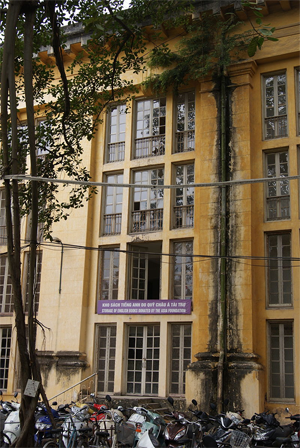
A building used to store English books donated by the Asia Foundation at the National Library of Vietnam
Since 1954, Books for Asia has donated more than 40 million books to libraries in dozens of Asian countries, impacting the lives of millions of Asians. In 2006 alone, Books for Asia donated 920,000 books and educational materials valued at $30 million to schools and educational institutions in 15 countries. Books for Asia's donations help inspire Asia's students, citizens, and future leaders by enhancing English-language capacity, sharpening vocational and research skills, improving their knowledge about America, and giving the gift of enhanced literacy to children. The Asia Foundation's experienced local staff throughout Asia allows the Books for Asia program to work with librarians and educators to identify needs and appropriate materials, and to distribute requested books quickly and efficiently.
In 2005, Books for Asia's donations had a special focus on communities affected by the Asian tsunami in December 2004. Donations from publisher Scholastic, Inc., and a timely endorsement by the Association of American Publishers, helped Books for Asia respond to the urgent need for books in schools and libraries in Sri Lanka and Thailand that were devastated by the disaster. As these communities rebuild, Books for Asia will continue to provide access to children's books, with a total of more than 300,000 reaching affected schools by the end of 2006.
Books for Asia in Timor Leste
"Books for Asia" is one of the many initiatives that have been put forth by TAF. Under this program, one million brand-new books are put into the hands of students, educators, and local and national leaders in 18 countries annually. The Asia Foundation recognizes that books change lives and help shape young people's imaginations, critical thinking skills, and their understanding of the world. Therefore, they are recognized as powerful tools to combat poverty and inspire positive, long-lasting change.
The main objective of the program is to provide access to information through reading materials, and cultivating a culture of reading and literature and linking people together in today's world. Under TAF, resources are made available for the people in Timor-Leste to enhance their mastery of English language; sharpen vocational and research skills, build knowledge in the business, legal and sciences professions. This enables people in Timor-Leste, regardless of their age, to equip themselves with more knowledge and skills through reading. This project also seeks to infuse children with an early love for reading, which is critical to increasing literacy rates.
Since TAF's founding in 1954, 45 million books, software programs and other educational materials have been donated to tens of thousands of learning institutions. Each year, the Asia Foundation in Timor-Leste receives brand new, high quality books donated by prominent publishers in the U.S. These books are catalogued and distributed to the recipients in Timor-Leste based on requests as well as through book drives.
The Mobile Library Program also consistently extends the Books for Asia program and its outreach to a bigger community in Timor-Leste. Extensions of the program are achieved through routine visits to schools, libraries and universities in Timor-Leste. These materials will eventually improve the quality of educational institutions currently available in Timor-Leste. Apart from the Books for Asia program, the Foundation also supports initiatives that spur literacy, promote understanding of democratic principles and strengthen civic participation. For example, the Foundation supported events jointly organized by Alieu Training and Resource Center (A resource center in the rural area of Timor-Leste) and the Ministry of Education that encourages children to continue schooling by recognizing the children's accomplishments in their education. In 2007, the resource center conducted a speech contest for school children in the Aileu District; and in 2008 and 2009, reading contests for school children was held for the children in Aileu District
Today, the Asia Foundation's Books for Asia program in Timor-Leste has distributed 9,942 books to more than 40 public, school, university and local NGO libraries as well as government agencies. More than 3,000 of the books are allocated toward book fairs to help increase awareness about the important role of reading.
Exchanges
Through its Asian American Exchange unit, The Asia Foundation seeks to encourage greater understanding between Asians and Americans with the ultimate aim of contributing toward strengthened U.S.-Asia relations. For over six decades, Foundation grants have provided thousands of participants with opportunities to exchange views, professional perspectives, and gain direct experience with regions other than their own through high-quality tailored fellowships, study tours, workshops, and other programs. Notable programs include:
• The Foundation's Asian Perspectives Series and Emerging Issues Series brought Asian civil society leaders and policymakers to Washington, D.C. to discuss vital issues across the region.
• The Foundation's Ellsworth Bunker Asian Ambassadors Series, also organized by the Foundation's Washington office, brought together ambassadors from Asia and select U.S. government, business, policy, and media leaders.
• The Asia Foundation also continued its 30-year partnership with the Henry Luce Foundation to administer an internship program for young Americans with leadership potential. Since 1974, the Asia Foundation has developed and overseen placements for more than 700 Luce Scholars in East and Southeast Asia.[16]
Environment
The Asia Foundation's Environment program supports Asian initiatives to ensure the sustainability of the environment and natural resources critical to Asia's development and future well-being. The Foundation works with a broad range of local stakeholders including civil society, government, and the private sector to strengthen the institutions and processes through which environmental resources are managed, and to improve environmental policy. Areas where the Foundation is having an impact in Asia include: advancing responsible mining and natural resource management in Mongolia; increasing public participation and transparency in environmental decision-making in China; and preparing for natural disasters and climate change in the Pacific Islands, among others.
Regional cooperation
The Asia Foundation's Regional Cooperation program works to strengthen relations among Asian nations and their peoples in the effort to foster peace, stability, prosperity, and effective governance. Its focus includes fostering regional cooperation on critical issues in Southeast, Northeast, and South Asia; foreign policy capacity-building in select countries in developing Asia; providing life-changing opportunities for emerging leaders in the region; and facilitating policy dialogues on Asian affairs and U.S.-Asian relations in Washington.[17]
Board of Trustees
Officers of the Board of Trustees
• Sunder Ramaswamy, Chair of the Board and Executive Committee
• S. Timothy Kochis, Vice Chair of the Board and Executive Committee
• Kathleen Stephens, Vice Chair of the Board and Executive Committee
• Daniel F. Feldman, Treasurer of the Board and Executive Committee
• Teresita C. Schaffer, Secretary of the Board and Executive Committee
• David D. Arnold, President and Chief Executive Officer
• Suzanne E. Siskel, Executive Vice President and Chief Operating Officer
• Gordon Hein, Senior Vice President, Programs
• Nancy Yuan, Senior Vice President and Director, Washington, D.C.
• Ken Krug, Vice President, Finance and Chief Financial Officer
• Amy Ovalle, Vice President, Global Communications
• Mandy Au Yeung, Assistant Secretary to the Board of Trustees[23]
Members of the Board of Trustees
• Terrence B. Adamson
• William L. Ball
• Howard L. Berman
• Robert O. Blake Jr.
• Jerome L. Dodson
• Elizabeth Economy
• Karl Eikenberry
• Ted Eliot III
• Daniel F. Feldman
• Winnie C. Feng
• Jared Frost
• Michael J. Green
• Noeleen Heyzer
• Karl F. Inderfurth
• Stephen Kahng
• Mark W. Lippert
• Clare Lockhart
• Patricia M. Loui
• Meredith Ludlow
• James D. McCool
• Janet Montag
• Moon Kook-Hyun
• Lauren Kahea Moriarty
• Adil Najam
• William H. Neukom
• Dustin Palmer
• Iromi Perera
• Ruby Shang
• Masako H. Shinn
• Deanne Weir[23]
Philanthropy
In 2006, the Asia Foundation provided more than $53 million in program support and distributed 920,000 books and educational materials valued at $30 million throughout Asia.
Reference
1. "The Asia Foundation" (PDF). Foundation Center. Retrieved 4 February 2019.
2. "The Asia Foundation: Improving Lives, Expanding Opportunities". Funds for NGOs. Retrieved 19 February 2019.
3. Crewdson, John (December 26, 1977). ""Worldwide Propaganda Network Built by the C.I.A."". New York Times. Retrieved 13 February 2019.
4. Best, Emma (November 2, 2017). ""The stolen history of the CIA and the Asian Foundation Financial records and declassified files reveal decades of distortions regarding the Agency's ties to the non-profit"". Muckrock. Retrieved 26 April 2018.
5. "Critical Issues Facing Asia: Marking 60 Years". World Affairs. 4 September 2014. Retrieved 19 February 2019.
6. Rogin, Josh (9 June 2010). "Arnold to lead the Asia Foundation". Foreign Policy. Retrieved 19 February 2019.
7. "Archived copy". Archived from the original on 2015-03-19. Retrieved 2015-03-20.
8. "Asia Foundation". China CSR Map. Retrieved 19 February 2019.
9. "Campaign theme". International Women’s Day. Retrieved 19 February 2019.
10. DE Vos, Manola (26 May 2014). "The next big thing in development: What Asia's young leaders think". Devex. Retrieved 19 February 2019.
11. Tri Thanh, Nguyen (18 April 2012). "To Reduce Impact of Natural Disasters, Vietnam Must Engage Small Businesses". The Asia Foundation. Retrieved 19 February 2019.
12. http://www.bangkokpost.com/opinion/opin ... tice-first
13. Allen, Karen (5 December 2013). "Survey on Afghan fears over corruption and security". BBC News. Retrieved 19 February 2019.
14. Duxbury, Sarah (7 June 2010). "Asia Foundation names new president". San Francisco Business Times. Retrieved 19 February 2019.
15. "USAID Supports Afghan Women-owned Businesses to Become More Competitive". USAID. 19 April 2018. Retrieved 19 February 2019.
16. "New Report Reveals Trends and Implications of Conflict in Asia". The Asia Foundation. 4 October 2017. Retrieved 19 February 2019.
17. "Archived copy". Archived from the original on 2015-03-17. Retrieved 2015-03-20.
18. "Doc. 132: Memorandum from the Central Intelligence Agency to the 303 Committee". Foreign Relations of the United States, 1964–1968, Volume X, National Security Policy. US Department of State. June 22, 1966. Retrieved 2 September 2017.
19. "Routing and Record Sheet: Committee for a Free Asia" (PDF). Central Intelligence Agency.
20. "DTPILLAR". Internet Archive.
21. Congressional Research Service (February 1983). "The Asia Foundation: Past, Present and Future" (PDF). Central Intelligence Agency.
22. Congressional Research Service (February 1983). "The Asia Foundation: Past, Present and Future" (PDF). Central Intelligence Agency.
23. "Our People". The Asia Foundation. Retrieved 19 February 2019.
External links
• Official website of the Asia Foundation
• Asia Foundation Records at the Hoover Institution Archives

